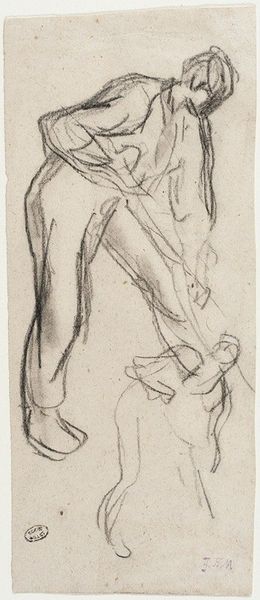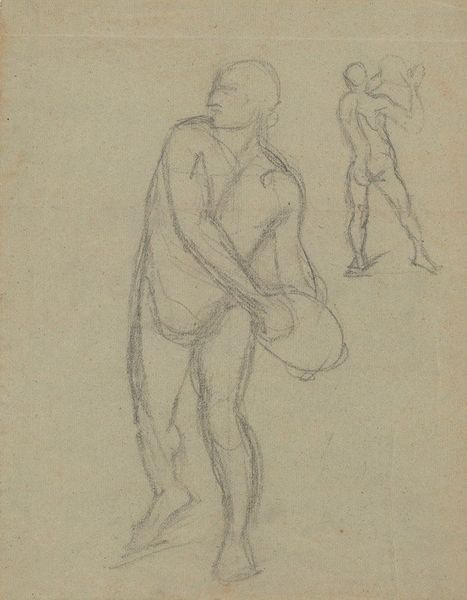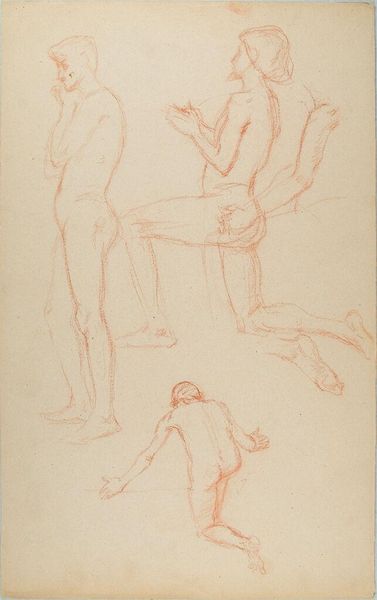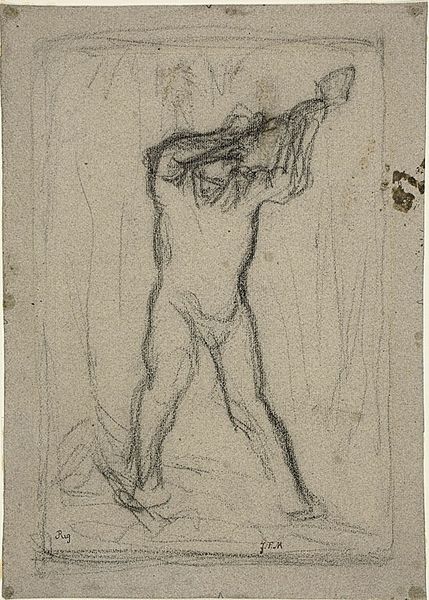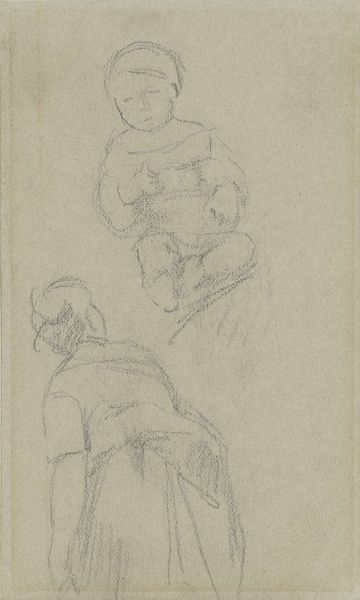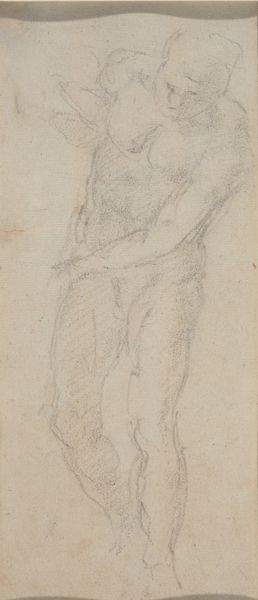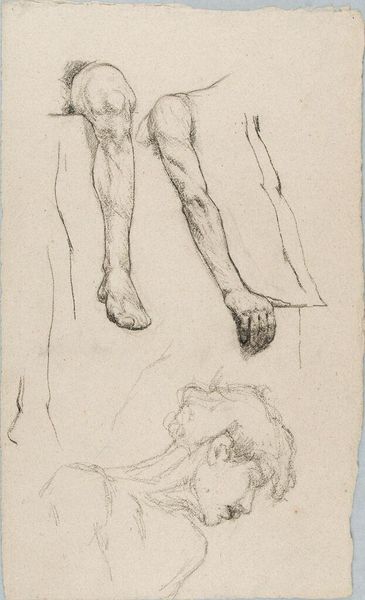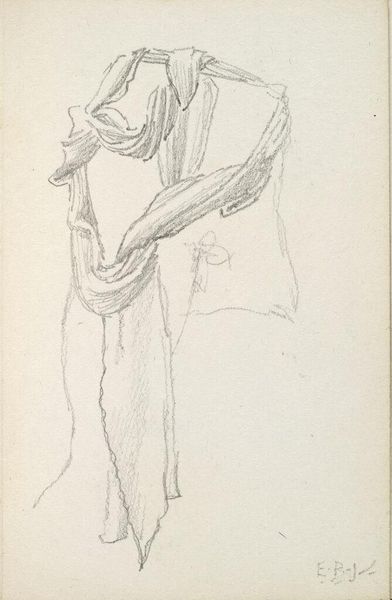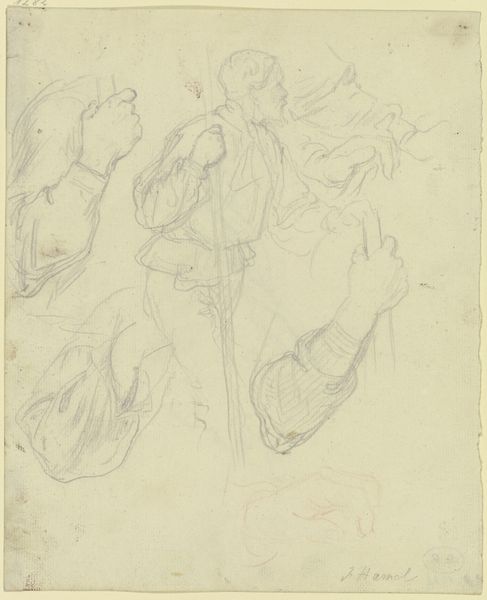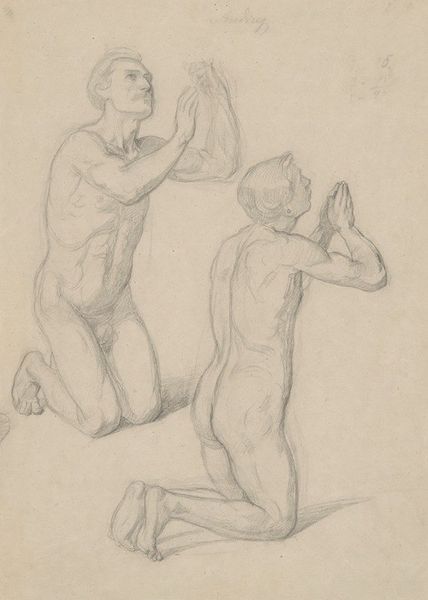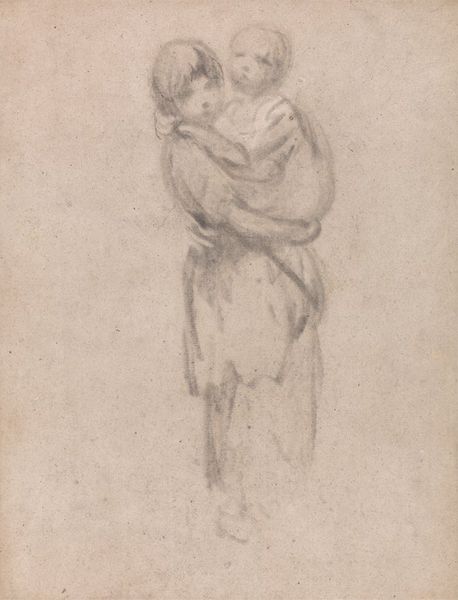
drawing, pencil
#
portrait
#
drawing
#
amateur sketch
#
light pencil work
#
thin stroke sketch
#
pencil sketch
#
incomplete sketchy
#
figuration
#
personal sketchbook
#
detailed observational sketch
#
pencil
#
sketchbook drawing
#
pencil work
#
history-painting
#
academic-art
#
italian-renaissance
#
nude
#
initial sketch
Copyright: Public Domain: Artvee
Curator: We're looking at sketches by Józef Simmler from 1866-1867. These are preparatory studies for his painting "Martyrdom of St. Matthias." Editor: My first impression is one of vulnerability. The sketched figures seem exposed, caught in a moment of physical exertion that anticipates suffering. There's an almost fragile quality to the lines themselves. Curator: Exactly. And consider the historical context: Simmler was working in a Poland struggling under occupation. This image of sacrifice speaks to the precariousness and physical suffering associated with Polish identity. He returned to Poland after studying abroad and used this historical art to focus on contemporary Poland, Editor: So, these nude figures, raising what looks like a large bucket, are more than just classical studies. Could the bucket be symbolic? Water can represent cleansing, but also overwhelming force. What do we know about the martyrdom of Saint Matthias? Curator: Matthias was stoned, then beheaded. He was an evangelist. The water element is compelling. This may signify ritual cleansing prior to his ordeal, or potentially refer back the original 11 apostles to a pure past that justifies Poland. I agree with the power aspect too, representing also the power of ritual. Editor: So, through these initial pencil sketches, Simmler explores not only the physical form but also a complex layering of religious and political meanings? The way the one figure overlaps and dwarfs the other also is thought provoking in terms of the social hierarchies in question. The Renaissance influence makes an intriguing, ironic choice of past idealized values, or pure form in which to house his political ideas. Curator: Precisely. It’s a compelling juxtaposition of classicism and raw emotion, a private study imbued with public resonance for that past but resonant for our modern world too. Simmler really situates the image within intersectional ideas like political autonomy. Editor: Seeing these tentative lines brings me closer to the artist’s thought process, recognizing the emotional depth being woven into the symbols. It is compelling. Curator: Indeed, allowing us to appreciate the personal sacrifices, spiritual devotion and national endurance implied within Simmler's final dramatic history piece and his initial preparation.
Comments
No comments
Be the first to comment and join the conversation on the ultimate creative platform.
